I'm sharing my best smart, eco-friendly tips for making the most of your ingredients and reducing food waste. Plus, learn how to make the most flavorful homemade chicken (or turkey) stock from your pantry leftovers.
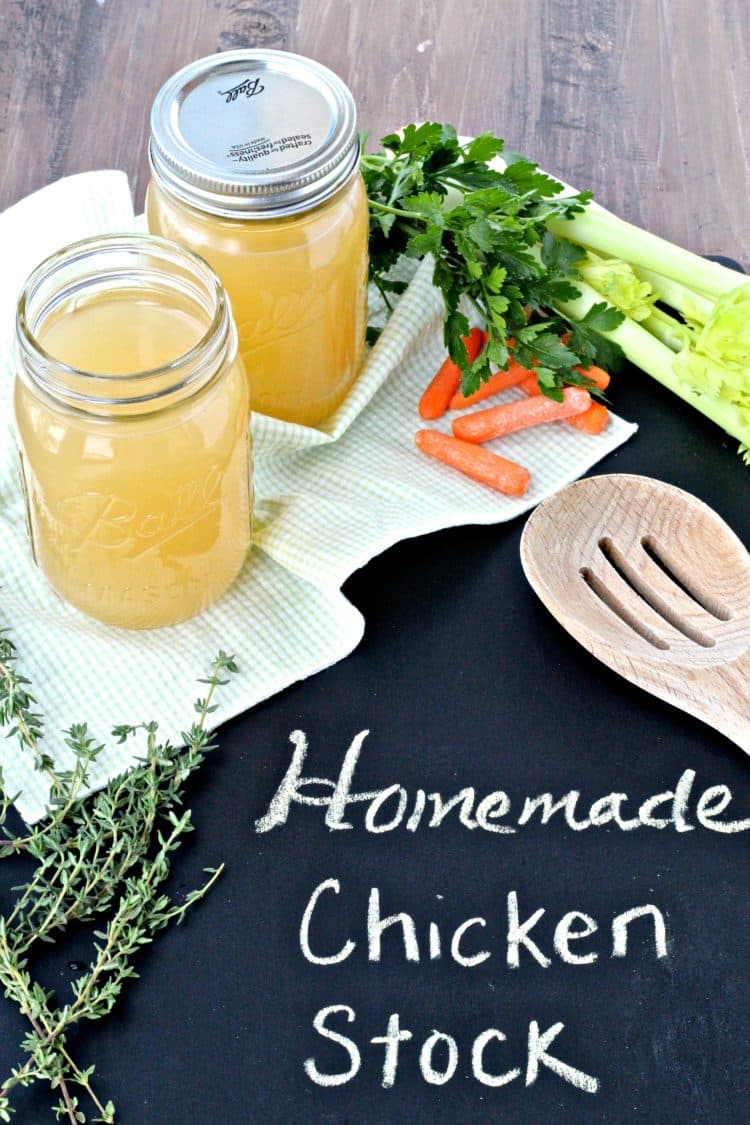
How to reduce food waste is an important topic that I’ve become very interested in as I’ve learned more about it in recent years. Did you know that roughly ⅓ of the food produced around the world (about 1.3 billion tons) for human consumption is lost or wasted each year?
This number is even higher in the United States where approximately 40% of food goes to waste. These are staggering numbers!
Nobody likes wasting food or having to throw away spoiled or moldy produce. But though we don’t intend to do it, it inevitably happens. Although this is a complex, global issue, there are lots of things you can do to reduce food waste in your home.
I'll show you how to create homemade chicken (or turkey) stock, by transforming your kitchen scraps into liquid gold, reducing food waste while enhancing your cooking endeavors.
Tips on How To Reduce Food Waste
1. Menu planning:
Take a little time at the beginning of the week to plan your meals for the whole week. Choose dishes that use up all of the ingredients that you buy so that you don’t end up throwing them away at the end of the week.
For example, if you’re buying a whole head of broccoli simply to use a handful of it in a salad recipe, plan to use up the remainder the next day in a stir-fry dish or a batch of broccoli soup. Get creative and have a clean-out-your-fridge meal at the end of each week.
2. Take stock of your kitchen before you shop:
How many times have you bought something at the grocery store just to come home and see that you already had that item? Once you plan your menu for the week, take stock of your fridge and pantry so you don’t buy things you don’t need.
3. Shop in the bulk section:
When you only need a small amount of an ingredient for a recipe, check out the bulk food section of your grocery store. You can buy only as much as you need and it’s perfect for ingredients like nuts, seeds, spices, and grains.
The salad bar is a great place to get small amounts of things like vegetables, cheese, olives, and hot peppers.
4. FIFO:
FIFO is a common practice in the food service industry and stands for first in first out. It’s a simple method of rotating your food items so that they won’t spoil.
When you purchase new items like milk, place the new milk in the back of the fridge and move the older milk to the front so that you use it up first before it expires. This not only helps reduce food waste, it’s also important in preventing food borne illness.
5. Store your food properly:
Make sure your fridge is set at the proper temperature (40ºF or lower) and learn how to store fresh herbs and produce properly to extend their shelf life. Store fruits and vegetables in the crisper drawers to preserve them longer. Don’t wash delicate berries until you’re ready to eat them to prevent mold.
Certain fruits, like bananas and apples, should be stored by themselves because they emit gases that ripen other fruits and vegetables around them. Consider storing food in clear containers- if you see them, you’re less likely to forget about them.
Have you ever wondered how long chicken can sit out before you need to toss it? Read my post all about how to properly handle and store chicken to help ensure that it's always safe to eat!
6. Take advantage of your freezer:
If you don’t think you’ll be able to use up a food before it expires, consider freezing it. Plenty of foods freeze well and can be stored in the freezer for several months.
You can freeze uncooked items like bread, seafood, tomato paste and even fresh herbs. You can also freeze whole cooked meals like casseroles, chili, meatballs, and soup.
7. Use up every part of the food item:
Try to use up as much of the fruit, vegetable or protein that you purchase. Leafy greens like Swiss chard have stems that are delicious when sautéed. And the next time you buy beets, try adding the delicate greens to a salad.
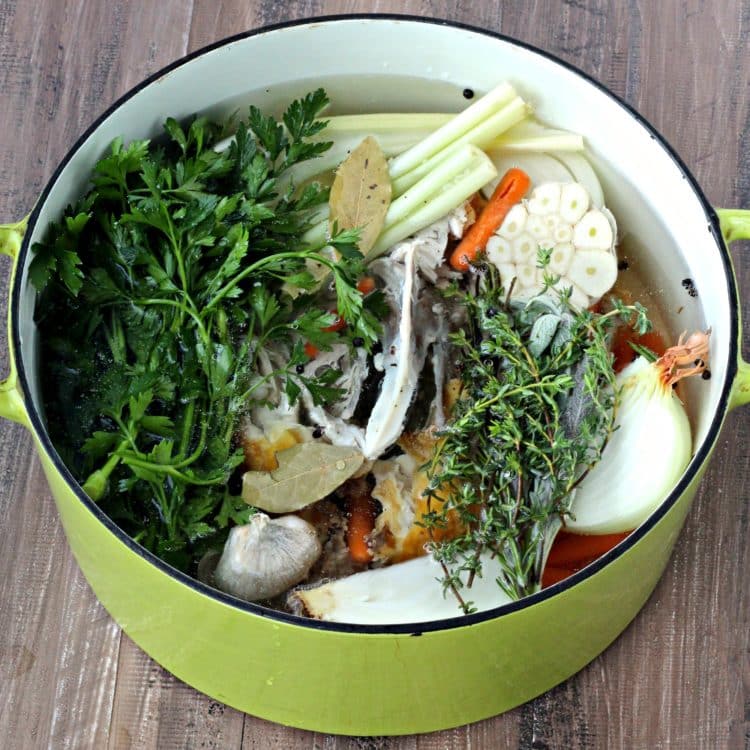
How To Make Homemade Chicken (or Turkey) Stock
One of the best ways to use up vegetables and herbs sitting in your fridge is to make a large batch of homemade stock. If you purchase a whole chicken or rotisserie chicken, you can add the carcass to the stockpot for a delicious chicken stock. This is also a great way to use up your leftover turkey from Thanksgiving.
I sometimes buy rotisserie chicken from the grocery store as a time saver on busy weeknights. On the first night, we typically enjoy it for dinner paired with a hearty salad.
Then the next day, I use the leftover meat to make chicken salad sandwiches for lunch or I repurpose it for dinner in dishes like quesadillas or chicken and dumplings.
Then on the weekend, when I have a little more time, I make a big pot of homemade chicken stock with the leftover carcass. I use a heavy-bottomed pot like my Dutch oven and throw in all the veggies and herbs in my fridge that are getting past their prime. I usually use celery, carrots, thyme, and parsley (stems and all).
As the stock simmered away on the stove, it makes the kitchen smell delicious!
After straining the stock, I store some in the fridge and some in the freezer to use another time. Here are some recipes to use up your delicious homemade chicken or turkey stock!
Recipes With Chicken (or Turkey) Stock
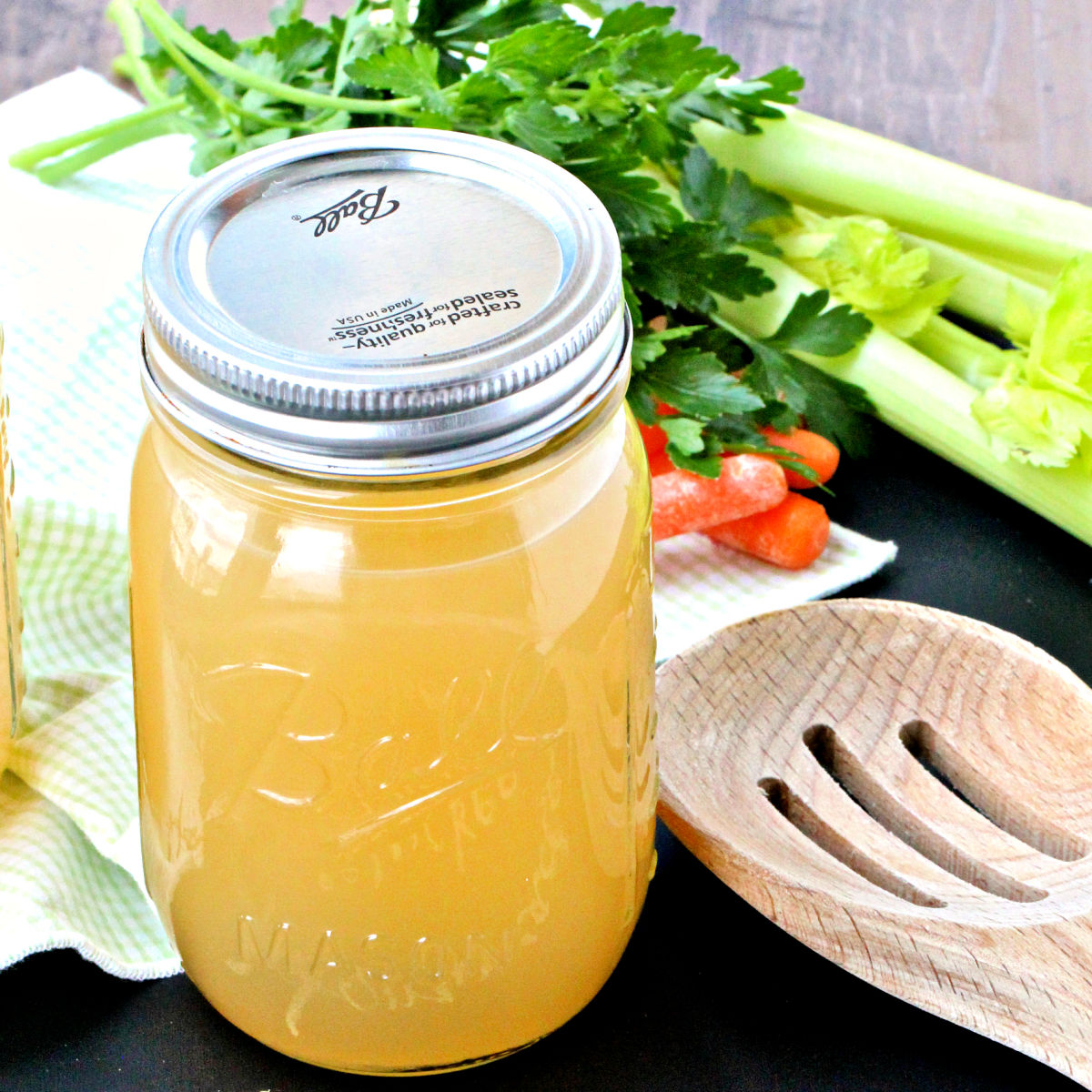
Recipe
Homemade Chicken (or Turkey) Stock
Equipment
Ingredients
- 1 whole chicken carcass from a leftover roast chicken or turkey or rotisserie chicken
- 1 medium onion, quartered
- 2 carrots, cut into large pieces
- 2 celery stalks, cut into large pieces
- 1 head garlic, unpeeled and cut in half crosswise
- 4 sprigs fresh thyme
- 10 sprigs parsley with stems
- 2 bay leaves
- 1 teaspoon kosher salt
- 1 teaspoon black peppercorns
Instructions
- Add all of the ingredients to a large heavy-bottomed pot or stockpot. Pour in enough cold water to just cover the chicken. Bring the liquid to a boil then reduce to a simmer. Simmer gently for about 1 ½ hours, covered.
- Strain the stock through a fine sieve into a large bowl. Cover and refrigerate. The next day, remove the surface fat. Store the stock in an airtight container in the refrigerator for up to 1 week or in the freezer for 3 months.
Nutrition




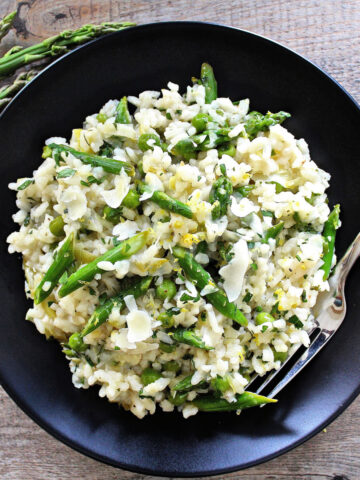

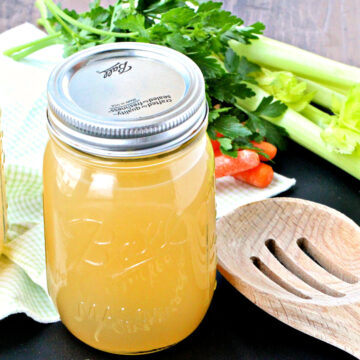


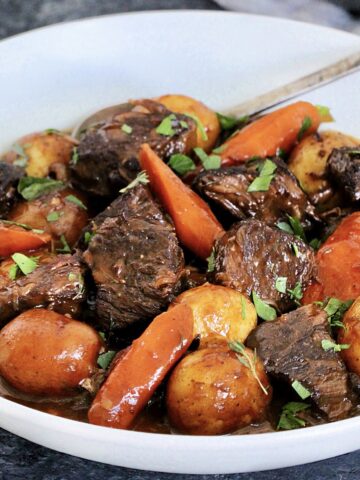


Jenn says
Homemade stock is such a great way to use up leftover veggies! Plus it tastes so much better than store bought. Every day should be Earth Day!
Alisa Fleming says
These are fabulous tips Sonali! I love the FIFO method - I've never seen that idea for refrigerators and definitely should pay more attention to this myself. I cringe every time I have to throw food away, and it happens more than I'd like to admit.
Kerri Olkjer says
Such great tips! We do a roasted chicken every Sunday, definitely trying the stock recipe.
Kristina @ Love & Zest says
So much flavor in this! Looks great!
Sarah says
Such a great way to use stuff up and you could even make a pretty amazing vegetable stock I bet or even veggie and miso broth. Thanks for the idea!
Laura says
So many great tips! I need to be better about meal planning for sure! I always use my freezer too for things I know we won't be able to finish before they go bad!
amanda -runtothefinish says
I had been reading about the benefits for years, but only recently tried making it! I was like doh this is so easy!!!
Taylor Kiser says
Loved your tips! Homemade chicken stock is so easy to make! Looks great!
Lindsay Cotter says
So many great tips for reducing food waste! This chicken stock recipe is a great example of how to make good use of food before it goes to waste! I bet your house did smell amazing while this was simmering on your stove!
Liz says
Such a great way to use up those ingredients and extras lying around! I am a HUGE food safety nerd so I used to be known as the FIFO queen when I worked in FS lol! Great recipe as always my friend!
Jessica @Nutritioulicious says
These are all such great tips! Love how no food scrap is left behind in this recipe too!
AZ@...And A Dash of Cinnamon says
What a great recipe for reducing food waste!
Mona says
Great tips! I always forget how easy it is to make chicken stock and this is a great basic recipe.
Farrah says
Yay! Thank you for this post! ;P I was just about to embark on this chicken-stock-making thing since I still have the neck from my roasted chicken recipe chillin' in the freezer. Can't wait to try this out! :]
Beverley Press says
what a great idea Sonali, thank you for another delicious recipe. This is a keeper xoxo
usha says
I agree. I do have a tendency to discard wilted greens and other vegetable. What a great idea to make a stock out of it and add your own flavors. Thank you for the ideas.